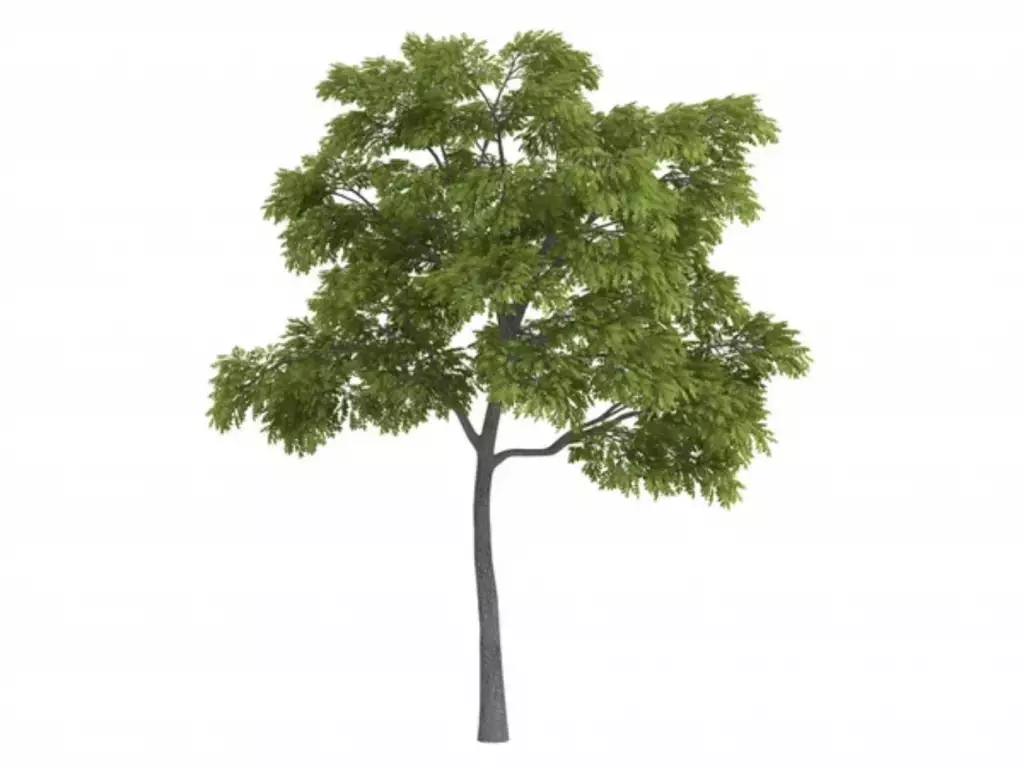How Much Is a Large 50ft Black Walnut Tree Worth?
Black walnut trees are highly valued for their beautiful wood, which can be found throughout North America. Their value depends on factors such as size, age, and the overall quality of the tree. In this article, we'll give you the current estimate worth of a large 50-foot black walnut tree on the market.
A 50-foot black walnut tree can be worth anywhere from $10,000 - $30,000 or more. A black walnut tree with a 20-inch diameter can be worth between $700 and $800. Each tree is currently priced at $5–10 per board foot, but it can be higher sometimes.
A black walnut tree can take up to 25 years to reach maturity, and the value of the tree can increase as it ages. Let's see how other factors, such as size and overall tree condition, affect the value of a single black walnut tree.
Understanding the value of a large 50ft black walnut tree will be key in assessing the long-term financial potential and growth prospects of your farm's trees, as you delve into starting a walnut farm from scratch.
Summary
- Black walnut wood is highly valued for its strength, durability, and beauty, and it is used in the production of high-end products such as furniture, musical instruments, and timber.
- You can potentially earn a significant income, around $200–$500 per year, from selling the nuts of a mature black walnut tree.
- A 50-foot black walnut tree can produce lumber with an estimated value of $5,000 to $10,000.
- You can calculate the estimated value of a 50-foot black walnut tree via manual calculation or by using a tree value calculator available online.

On this page:
A 50-foot Black Walnut Tree Is Worth More Than $10,000 To $30,000
The table below shows a breakdown of the estimated value of a 50-foot black walnut tree:
| Product | Estimated Value |
|---|---|
| Lumber | $5,000 - $10,000 |
| Nut production | $200 - $500 per year |
| Wood chips/mulch | $50 - $100 |
| Firewood | $200 - $500 |
| Timber framing | $10,000 - $15,000 |
| Furniture | $2,000 - $5,000 |
| Musical instruments | $5,000 - $10,000 |
| Edible products (nuts, syrup) | $500 - $1,000 |
| Total | $17,950 - $31,100 |
Value of its lumber
The estimated value of lumber from a 50-foot black walnut tree can range from $5,000 to $10,000 depending on the quality and size of the tree.
Black walnut wood is known for its durability and workability, and it is highly prized for its rich color and unique grain patterns. As a result, it is often used in the production of high-end furniture, flooring, and other wood products.
Additionally, these trees are relatively rare, which further contributes to their high value. A black walnut tree is also considered to be one of the most profitable hardwood trees.

Estimated nut production
A mature black walnut tree can produce between 50 and 100 pounds of nuts per year, depending on the tree's size and health. The nuts can be sold for $2 to $5 per pound, which translates to an estimated annual value of $200 to $500.
See also article on How Many Pounds of Walnuts per Tree on Average?
Other valuable products produced from 50-foot black walnut tree
Wood chips
The wood chips and mulch produced from a 50-foot black walnut tree can be sold for $50 to $100, depending on the quantity and quality of the material.
Wood chips and mulch are commonly used for landscaping and gardening purposes. They are an excellent way to improve soil health, retain moisture, and suppress weeds.
The black walnut tree is known for its dense, hardwood. Selling wood chips and mulch out of this tree can be a profitable business, especially if you have access to a large number of trees.
Always ensure that the wood chips and mulch are of good quality and free from any contaminants, which can be achieved by using proper equipment and techniques to process the material.
Firewood
The firewood produced from a 50-foot black walnut tree can be sold for $200 to $500, depending on the quantity and quality of the wood.
Although not typically preferred for firewood, if a black walnut tree needs to be removed for some reason (such as disease or construction), the wood can be used for firewood.
Black walnut wood is a high-quality hardwood that is known for its strength, durability, and attractive appearance. It is also known for its high energy content, which makes it an excellent source of heat.
However, black walnut wood can be difficult to split due to its hardness, which can make it more challenging to use for firewood.
Value in timber framing
Black walnut wood is highly valued for its strength, durability, and beauty, making it a popular choice for timber framing in high-end homes and buildings. The estimated value of a 50-foot black walnut tree for timber framing purposes is between $10,000 and $15,000.
Worth in furniture production
Black walnut wood is a popular choice for high-end furniture due to its beauty, durability, and workability. The estimated value of a 50-foot black walnut tree for furniture production is between $2,000 and $5,000.
The wood has a rich, dark color that ranges from deep brown to almost black, with a subtle grain pattern that varies from straight to wavy. It is also very hard and dense, making it highly durable and resistant to wear and tear.
In addition to its physical properties, black walnut wood also has a warm, inviting tone that adds a touch of elegance and sophistication to any piece of furniture it is used in.
It is also a versatile wood that can be shaped and finished in a variety of ways, making it ideal for a wide range of furniture styles and designs.
Importance in making musical instruments
Black walnut wood is also highly valued for its acoustic properties and is commonly used for making high-end musical instruments such as guitars, violins, and pianos. The estimated value of a 50-foot black walnut tree for musical instrument production is between $5,000 and $10,000.
Its wood is known for its unique tonal qualities, and its density and hardness give it a bright, clear sound, while its natural oils help to enhance sustain and resonance.
As a result of these desirable qualities, black walnut wood is highly sought after by luthiers (instrument makers) and piano manufacturers.

Other edible products (syrup)
In addition to the value of the nuts produced by a black walnut tree, the tree can also be tapped for syrup production, which can be sold for $10 to $20 per pint. The estimated value of a 50-foot black walnut tree for edible products such as nuts and syrup is between $500 and $1,000.
The syrup that is produced from black walnut trees has a unique flavor that is highly sought after by many consumers. The syrup can be used as a sweetener in a variety of dishes, and can also be used as a flavoring agent in sauces and marinades.
If you plan to put up a walnut farm in the future, here's a detailed breakdown of how much profit you can make.
Calculating The Worth Of A 50-foot Black Walnut Tree
In this section, we'll cover two common ways to estimate the value of your tree: using a tree value calculator and manual calculation.
Using a tree value calculator
A tree value calculator takes into account several factors, including the species of the tree, its age and size, and the current market value of the wood.
To use a tree value calculator, you'll need to measure the circumference of your black walnut tree at breast height (4.5 feet above the ground). You can then enter this measurement into the calculator, along with other relevant information about your tree.
Some popular tree value calculators include:
- 8 Billion Trees Tree Value Calculator
- Tree Benefit Calculator
- Tree Value Calculator by the Arbor Day Foundation
Keep in mind that a tree value calculator will only give you an estimate of your black walnut tree's worth. The actual value may vary based on factors such as the quality of the wood and local market conditions.

Using manual calculation
If you prefer a more hands-on approach, you can also manually calculate the value of your black walnut tree. This method involves measuring the tree's diameter and using a board foot calculation to determine its worth.
To manually calculate the value of your black walnut tree, follow these steps:
-
Measure the diameter of the tree at breast height.
-
Use a board foot calculator to determine the number of board feet of lumber in the tree. You can find board foot calculators online or use a formula such as:
board feet = (diameter^2 * height)/12
In this formula, "diameter" is the diameter of the tree in inches, "height" is the height of the tree in feet, and "12" is a constant that represents the number of board feet in a cubic foot of wood.
- Multiply the number of board feet by the current market value of black walnut lumber per board foot. As of 2023, black walnut lumber is worth anywhere from $5 to $10 per board foot, depending on the quality of the wood and local market conditions.
If you're interested in knowing how much an acre of black walnut trees is worth, here's an article for you.
Factors Influencing the Worth of a Black Walnut Tree
A 50ft black walnut tree can be worth up to $30,000 or more, but this can vary depending on the following factors:
Larger diameter equates to more value
A mature, well-cared-for black walnut of about 20 inches can go for $700-$800 or more. Usually, the diameter of the tree is directly related to the amount of usable lumber that can be harvested from it.
In general, the larger the diameter of the tree, the more valuable it is. This is because larger trees can yield more high-quality lumber, which is in high demand for use in furniture, flooring, and other high-end wood products.
Additionally, the diameter of the tree is often used as a proxy for its age and overall health. Older trees with larger diameters are often more valuable because they have had more time to grow and develop, and are likely to have a higher quality of wood.
The quality of the wood also impacts the value
In general, wood that is straight-grained, free of knots, and has a consistent color and texture is considered to be of higher quality and more valuable.
This is because high-quality wood is more desirable for use in fine furniture, cabinetry, and other high-end wood products. It is also more durable and resistant to damage, which makes it more valuable in the long run.
On the other hand, wood that is irregularly grained, knotty, or has other imperfections may be less valuable because it is more difficult to work with and may not be as aesthetically pleasing.
It may also be more prone to damage or decay over time, which can reduce its overall value.
The location of the tree can also affect its value
Trees that are located in urban or suburban areas may be more valuable than those in rural areas due to their accessibility and demand.
This is because black walnut trees in urban or suburban areas are often easier to access and transport, which can make them more desirable for use in woodworking and other industries.
Additionally, there may be a higher demand for black walnut wood in urban areas due to the presence of higher-end furniture makers, woodworkers, and other artisans.
On the other hand, black walnut trees in rural areas may be more difficult to access and transport, which can make them less valuable.
There may also be less demand for black walnut wood in rural areas due to a lower population density and a smaller market for high-end wood products.
When considering the cost of a 50ft black walnut tree, it's important to also understand the overall value of black walnut trees, as this comparison will help you assess the long-term financial benefits of growing and potentially selling mature trees in your orchard.
Older trees are more valuable than younger ones
A black walnut tree can take up to 25 years to reach maturity, and the value of the tree can increase as it ages as it has more time to grow and develop and is likely to have a higher quality of wood.
Older trees tend to have larger diameters, straighter grain, and fewer knots, which makes them more valuable for use in fine woodworking and other high-end wood products.
Additionally, they may have more historical or cultural significance, which can also increase their value. For example, a black walnut tree that has been growing on a particular property for generations may be considered a valuable part of the local heritage.
Estimating a tree's age
While it can be difficult to accurately determine the age of a tree, there are a few methods you can use to estimate it.
One method is to count the rings on a tree stump or a core sample taken from the tree. Each ring represents one year of growth, so counting the rings can give you a rough estimate of the tree's age.
Another method is to use the tree's height and diameter to estimate its age using a growth chart.
For example, if a tree has a diameter of 20 inches and a height of 60 feet, the growth chart may estimate that the tree is around 80 years old.



